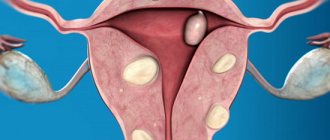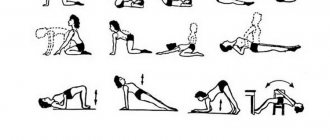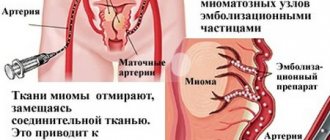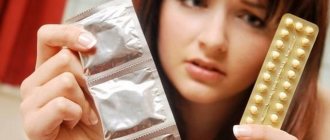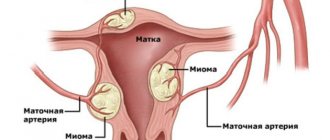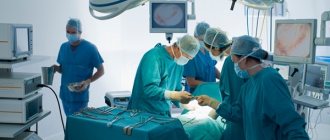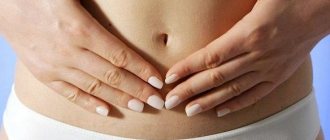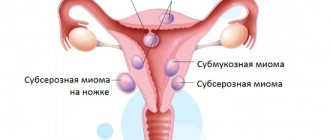≡ Home → Tumor diseases of the uterus → Myoma →
A benign tumor of the uterus, according to medical statistics, is detected in 30% of women, mainly at the age of 35-40 years. Living with fibroids imposes certain restrictions, and first of all we are talking about various thermal procedures. Solarium, bathhouse, sauna, beach, trips to the sea in warm countries - all of this suddenly becomes unavailable. But is this really so and is such a tactic justified for diseases of the uterus?
Is it possible to sunbathe, visit a solarium, and enjoy other similar procedures if you have uterine fibroids? There is no clear opinion on this issue. Gynecologists are divided into two camps - those who allow everything for fibroids and those who prohibit any thermal procedures. To make a decision, you need to consider all the options, evaluate the possible risks and understand how heat actually affects the growth of uterine tumors.
Solarium: problems, risks and contraindications
Russian gynecologists are mostly of the opinion that visiting a solarium if you have uterine fibroids is categorically not recommended. It is believed that such thermal procedures stimulate blood flow to the lower abdomen and pelvic organs (uterus and appendages). Activation of blood flow stimulates the growth of myomatous nodes. After tanning, the once calm tumor suddenly begins to grow, and it is quite difficult to stop this process. For this reason, gynecologists usually do not advise their patients to go to the solarium and discourage them from other thermal procedures.
According to Russian doctors, if you have fibroids, it is also forbidden to take a steam bath, visit a sauna, or take hot baths.
If you ask the opinion of related specialists - dermatologists and cosmetologists, they will also not give a clear answer to this question. Most doctors do not advise getting carried away with solariums, and this is not only due to the potential growth of fibroids. Artificial tanning can also cause other health problems:
- Launching and accelerating the aging process of the body;
- Decreased skin turgor and elasticity;
- Intensive production of melanin, the pigment that provides tanning. This substance provokes the development of skin cancer (melanoma).
Melanoma occurs due to the increased development of pigment cells that produce melanin. Such processes actively occur during exposure to the sun.
There is an opinion that visiting a solarium leads to an exacerbation of many chronic diseases, and uterine fibroids are only one of them. It is not surprising that it has become clear in people’s minds: solariums and fibroids are incompatible. European gynecologists do not agree with this statement. According to foreign doctors, there is no reason to prohibit a woman from visiting a solarium, and there are explanations for this:
- The harm of ultraviolet radiation in relation to uterine fibroids has not been proven, so there is no point in giving up artificial tanning;
- Fibroids cannot develop into cancer or sarcoma. According to the latest data, sarcoma is an independent disease, and thermal procedures have no effect on its development;
- Increased blood flow in the pelvic organs is not the key reason for the growth of myomatous nodes. In the initial stages, the tumor is formed under the influence of sex hormones. Further, the fibroid acquires the ability to grow completely autonomously, and no external factors (including irradiation in a solarium) affect the development of the disease.
Once fibroids have appeared, no environmental factors can significantly influence the process of development of the pathology.
Who to believe and what to do? Reviews about thermal procedures are contradictory. Some women indicate that regular visits to the solarium had no effect on the growth of fibroids and did not lead to the development of complications. Others say that it was artificial tanning and ultraviolet irradiation that provoked the growth of the node and led to surgery. It is impossible to confirm or refute this data. There have been no conclusive studies on this topic, and women are still left to make their own choices at their own risk. Many women find it much easier to refuse a potentially dangerous procedure than to live in fear and constantly think about a growing uterine tumor.
If you decide to visit a solarium, you need to take the following precautions:
- Treat your skin with sunscreen before the procedure;
- Choose vertical booths - their thermal effect is minimal;
- Sunbathe for no more than 2-3 minutes and no more than one course per year;
- Monitor the well-being and growth of the myomatous node (undergo ultrasound examination every 6-12 months).
It is also useful to read: Uterine fibroids and endometriosis
It is forbidden to visit the solarium if there is bleeding due to fibroids or the slightest suspicion of uterine sarcoma.
If a woman with fibroids has bleeding, then visiting a solarium is strictly prohibited.
Causes and ways of tanning affecting tumors
Sunbathing in the open air on sunny days is strictly prohibited if you have fibroids. Patients with a similar diagnosis are allowed to stay on the beach only in the mornings or evenings, but only if they use a beach umbrella.
And don’t worry, in not very hot weather you will still get a tan, but it will lie more evenly on the skin and will not cause unpleasant burns.
View gallery
If the patient has to go outside during the day, it is advisable for her to wear light clothing that will cover her body. And while on the beach, it is very important to monitor your well-being without exposing your skin to sunlight. It is best to stay under an umbrella at all times and use sunscreen as often as possible. Is it possible to sunbathe with uterine fibroids without cream? Absolutely not.
Visiting baths, saunas, solariums, various thermal procedures, and, in addition, sunbathing after surgery to remove fibroids is permitted by doctors only after the completion of the recovery period of rehabilitation, which must be agreed upon with the appropriate specialist.
https://youtu.be/BcGtxRMsLWQ
Sun, air and water: is it possible to sunbathe on the beach?
All the arguments expressed against solariums are also relevant for natural tanning, but with some reservations. Unlike artificial ultraviolet rays, natural ones have different intensities at different times of the day. A woman who fears for her health can choose the optimal time to visit the beach.
Important aspects:
- You should sunbathe on the beach during the period of minimal solar activity: before 11 am or after 16 pm. At this time, the sun is not so hot, which means that the likelihood of a negative effect on fibroids is minimized;
- The time spent under the sun should not exceed 30 minutes. It is best to alternate between resting in the shade and in the sun;
- Don't forget about sunscreen.
When being in the open sun, be sure to use sunscreen.
With regard to natural tanning, scientists also have not found any convincing evidence of harm. There is an opinion that the sun is less dangerous and outperforms a solarium, but this statement remains controversial. Both on the beach and in the solarium there is an intense thermal effect, which activates blood flow in the pelvic organs and can potentially cause the growth of a myomatous node. For this reason, Russian gynecologists say that you cannot sunbathe on the beach if you have fibroids. European colleagues do not agree with them here either, but women are encouraged to verify the accuracy of these statements through their own experience.
Rules for tanning with uterine formation
Sunbathing in a solarium is highly not recommended. But if a girl nevertheless decides to go to the studio, then maximum precautions must be taken:
- First you need to go to the doctor and undergo a follow-up examination.
- It is imperative to apply a special product to the entire body that will protect against UV rays.
- The duration of one session should not exceed 2-3 minutes, and the course should not exceed 10 procedures.
- The interval between insolations is at least 48 hours.
- It is preferable to go to a vertical solarium, as it has better ventilation. This reduces the thermal effect on the body.
- You need to be very careful when choosing a solarium. You shouldn't go to the nearest tanning studio just because it's convenient. The institution must comply with all SanPin standards.
The duration of one session should not exceed 2-3 minutes
Other thermal procedures for uterine fibroids
Precautionary measures apply not only to the beach and solarium, but also to other similar entertainment. Living with fibroids, as well as endometriosis and other hyperplastic processes, involves a number of restrictions:
- It is not recommended to take hot baths or showers. You should swim in warm, pleasant water. The optimal water temperature is 37 degrees. Warm baths are allowed without time restrictions;
- You should not use a contrast shower, especially in the abdomen, buttocks, and lumbar region;
- You should not warm your feet, including using warm and hot foot baths or applying mustard plasters. It is not prohibited to wear woolen socks, but you should not overheat the body;
Hot foot baths are not recommended for women with uterine fibroids.
- You cannot bask in dry heat and carry out any health procedures of this kind in the projection of the uterus (lower abdomen, lumbar region - with large myomatous nodes). Impact on other parts of the body is permitted;
- It is not recommended to bask in a bathhouse or sauna;
- Swim in hot springs.
According to the generally accepted theory, all these procedures lead to increased blood flow in the pelvic cavity. There is an influx of blood in the vessels feeding the fibroid, and the tumor begins to grow. It is difficult to prove the harm of thermal procedures, but there are not many people willing to risk their health. If we recall the technique of uterine artery embolization (UAE), it becomes clear that changes in blood flow really affect tumor growth. With UAE, blood flow stops and the fibroid regresses. During thermal procedures, blood flow increases, which means that conditions are created for the proliferation of tumor cells.
It is important to know
If a woman decides to undergo any thermal procedure, she should be careful and know when to stop. If you feel unwell, it is better to refuse warming up.
If a woman feels unwell, it is better to avoid thermal procedures.
Trips to the sea for uterine tumors
Is it possible to go to the sea with fibroids? No problems will arise if this is the Laptev or Barents Sea - it is unlikely that in such conditions a woman will sunbathe and spend a lot of time under the sun. But we are usually talking about warm seas. Travel to the south and seaside holidays are not prohibited, but caution should be exercised:
- Before traveling, be sure to visit a gynecologist and assess the condition of the fibroids, and if necessary, perform an ultrasound. If there is a tendency for the node to grow rapidly, you should refrain from traveling;
- To visit the beach, you should choose a time of moderate solar activity. You can’t sunbathe from 11 a.m. to 4 p.m.—during this period the sun is most aggressive. You can only visit the beach at sunset. In this case, it is unlikely that you will get a tan, but you will have the opportunity to calmly swim in warm water without risk to your health;
- If a woman wants to get a beautiful tan despite everything, she can allow herself to be in direct sunlight for some time, but no more than 1-2 hours a day. The rest of the time you should stay in the shade;
- When leaving the beach, you need to wear clothes that cover your entire body - this will minimize exposure to sunlight. You cannot overheat, so clothing should be light, breathable, and made from natural materials.
It is also useful to read: Doctors’ opinion on the use of the Mirena spiral for fibroids
It is possible and necessary to relax at sea if you have fibroids, but upon returning home it will not be a bad idea to visit a doctor after 3-6 months. There is no point in immediately running to a gynecologist. Even if the fibroid begins to grow, it will not be possible to quickly track the changes. The rate of tumor growth can be assessed by performing a control ultrasound every 6-12 months.
If a woman with fibroids was on vacation at sea, then after 3-6 months an ultrasound should be done to monitor the condition of the fibroids.
Can a woman suffering from fibroids move to live in the south? Yes, but subject to all the above precautions. Living in warm countries does not require you to be on the beach from morning to night and sunbathe until you get black. You can organize your life in such a way that you are exposed to the sun only during the hours of its minimum activity - early in the morning or late in the evening. This approach will reduce the possible risks of thermal procedures to a minimum.
For your information
With fibroids, it is not the tan itself that is dangerous, but the exposure to heat. Ultraviolet rays provoke the development of skin cancer, but have no effect on a benign tumor of the uterus and do not lead to its degeneration into sarcoma.
Choosing a sunscreen
There are now a lot of such products in all stores, especially during the holidays, so after consulting with a sales consultant, you can choose a product that is useful, necessary, and affordable.
A prerequisite is that it must be a tanning cream with a high level of protection against UV rays.
Tanning creams for solariums and outdoors differ in their functions. A tanning product promotes the penetration of rays into the layers of the skin, and a tanning product in the sun has the opposite effect - it protects the skin from the penetration of ultraviolet rays.
In addition, these products do not provide complete protection against sunburn and do not eliminate the need to follow the rules. When choosing a product, you need to take into account your skin type, because any tanning cream includes specific and non-specific components.
- Specific ones contain shielding substances that prevent rays from entering the deep layers of the skin.
- Non-specific ones contain various moisturizing and cosmetic components, the percentage of which allows you to select a cream for a specific skin type.
You can also use essential oils. They relieve discomfort after exposure to the sun and tanning procedures: chapping, peeling of the skin, redness.
People prone to allergic reactions should choose products with caution.
A simple test is carried out: spread a little product on the back of the elbow and leave for several hours. If there is no redness on the skin, then you can use it, but if red spots and itching appear, then you should discard this drug.
Size matters?
There is an opinion that with small-sized fibroids, a woman can visit the beach, solarium, go to the sauna and take hot baths, while with large tumors, thermal procedures should be forgotten. Gynecologists do not agree with this statement and warn: no connection has been identified between the size of the node and the degree of possible risk. Exposure to heat can trigger the growth of any fibroid, and then a small tumor will become large, and a large tumor will become gigantic. On the contrary, thermal procedures may have no effect on the development of fibroids, and in this case its size is even less important.
Experts do not see a direct connection between the size of myomatous catches and thermal procedures.
The location of the node is also not a criterion. In a solarium, on the beach or in a hot bath, the effect is on the entire body, and it does not matter where the tumor is located - in the uterine cavity or outside it. The number of myomatous nodes is also not taken into account.
Factors that matter:
- Myoma growth rate. If the tumor is growing rapidly, there is no need to further provoke it;
- The likelihood of developing sarcoma. If there is a suspicion that a malignant tumor is hidden under the guise of fibroids, you should refrain from any thermal procedures;
- Uterine bleeding. If bloody discharge from the genital tract appears, you should not sunbathe. All thermal procedures increase bleeding. During menstruation, the beach and solarium are also prohibited;
- Development of complications requiring surgical intervention: torsion of the leg, birth of a submucosal node, infection of fibroids;
- Pregnancy due to fibroids or suspicion of it. While expecting a baby, thermal procedures can cause a miscarriage. During the same period, fibroids grow under the influence of progesterone, and there is no need to further provoke tissue proliferation;
- General condition of the woman. For some diseases, thermal procedures are prohibited, regardless of the presence of fibroids. Women who have entered menopause should be especially careful.
Before carrying out any procedure that involves warming up the body, you should consult a doctor and clarify possible contraindications. A responsible attitude towards your own health will help you avoid many problems and reduce the risk of dangerous complications.
Expert opinion on the effect of thermal procedures on uterine fibroids
Types by location:
- Submucosal – located under the mucous membrane.
- Subserous - located under the serous membrane.
- Interstitial - located inside the muscle layer.
- Cervical – formed in the cervix.
In the majority of cases, fibroids exist unnoticed by the woman and are detected during routine examinations. Submucosal fibroids can sometimes cause uterine bleeding. Tumors of significant size can put pressure on adjacent organs and cause pain, as well as problems with urination and defecation.
Complications include bleeding, deformation of the node's pedicle, and death of the submucosal or interstitial node.
The diagnosis is clarified using ultrasound.
Conservative treatment is given to women with small tumors up to “12 weeks of pregnancy” without bleeding. With careful observation, gynecologists prescribe hormonal drugs, but they only have an effect with constant use. When hormonal medications are discontinued, fibroids begin to progress again.
Indications for surgical treatment are significant tumor growth, massive bleeding leading to anemia, compression of neighboring organs, necrosis of the tumor node, cervical fibroids.
In the video - the rules of tanning in a solarium:
